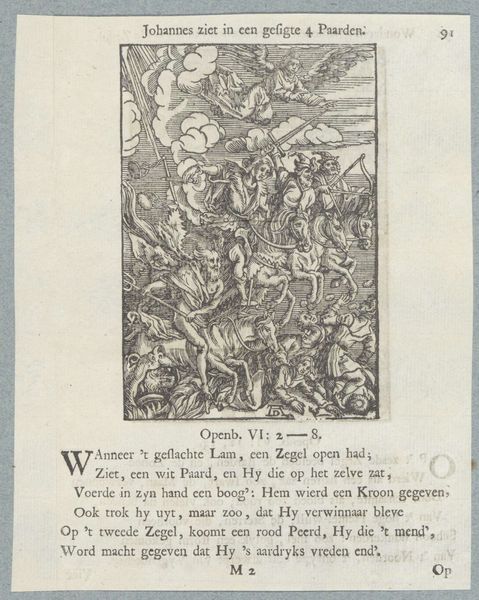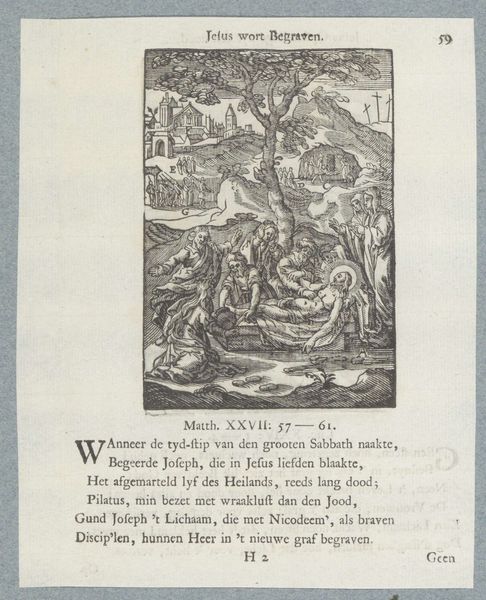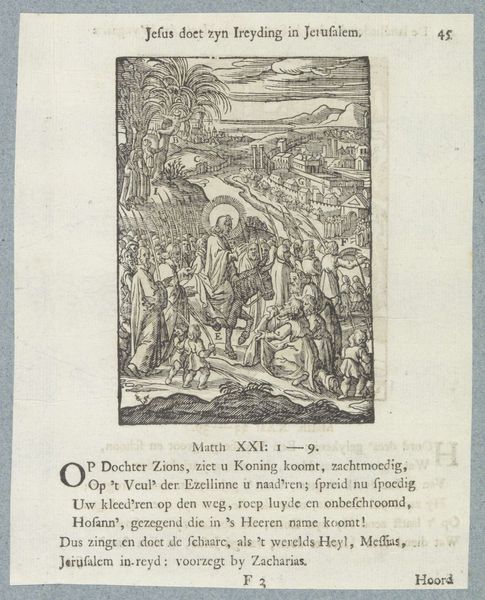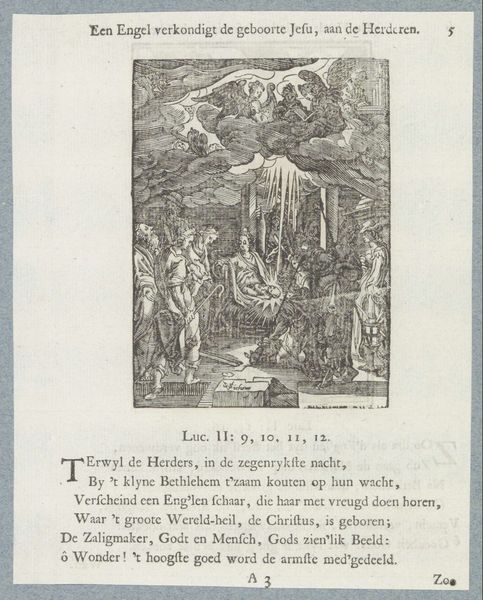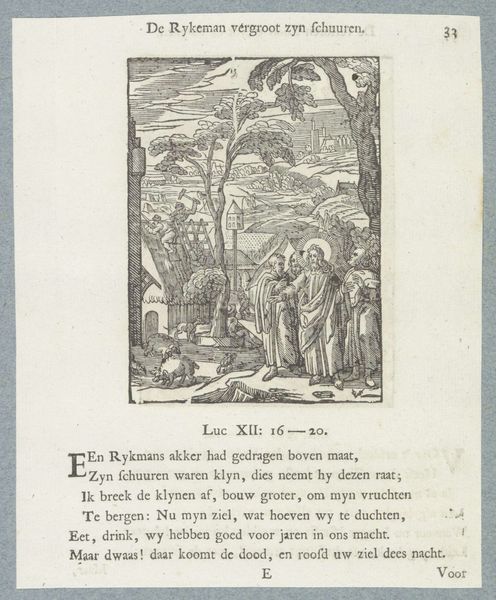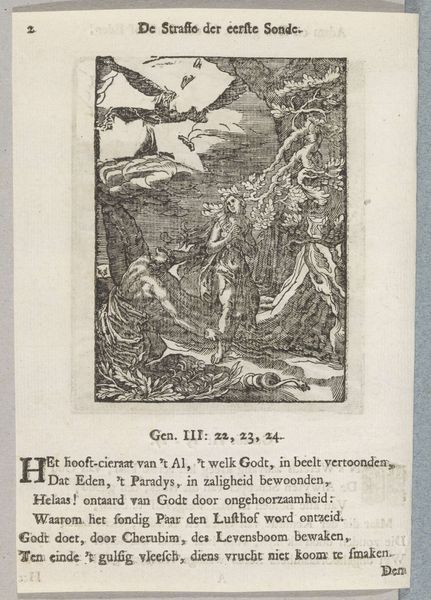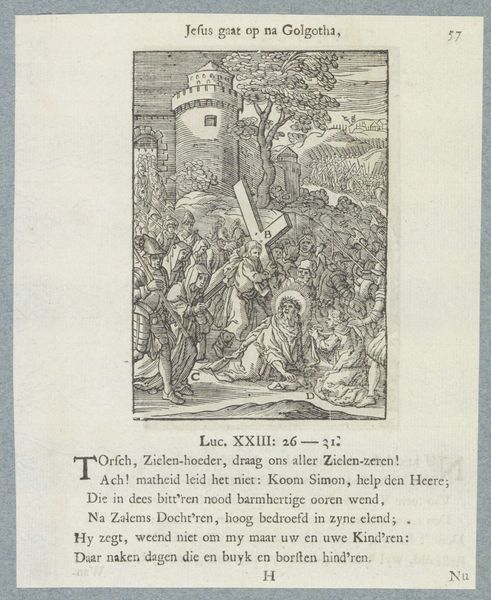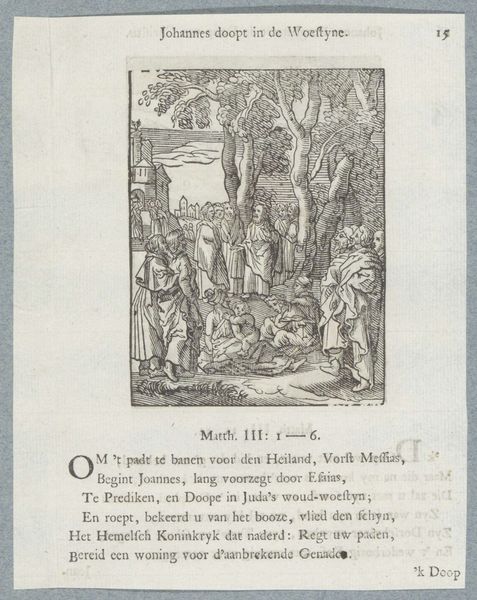
drawing, print, paper, ink, engraving
#
drawing
#
narrative-art
#
baroque
# print
#
landscape
#
figuration
#
paper
#
ink
#
genre-painting
#
engraving
Dimensions: height 103 mm, width 74 mm, height 170 mm, width 137 mm
Copyright: Rijks Museum: Open Domain
Editor: This engraving, titled "Plukken van koren op sabbath," attributed to Christoffel van Sichem II, probably made somewhere between 1629 and 1740, depicts a biblical scene in a landscape. I'm struck by how detailed the figures are despite the small scale of the print. What do you see in this piece? Curator: Immediately, I see a challenge to established norms represented through symbolic imagery. The act of gleaning grain on the Sabbath, a direct violation of religious law, becomes a powerful emblem of questioning authority. Notice how Christ is positioned centrally, bathed in a light that seems to emanate from within. Editor: Yes, it's like the artist is drawing a clear distinction, almost creating opposing sides. What is the windmill suggesting? Curator: The windmill, often seen in Dutch landscapes, carries the weight of daily life and labour. Here, its inclusion juxtaposes the divine with the mundane, prompting us to consider how these two realms intersect, or even collide. Can piety exist alongside the necessities of life? Or does it demand a suspension of worldly concerns? Think of how food connects the act of physical sustenance to a divine purpose. The choice to depict grain, a symbol of nourishment and divine provision, complicates the perceived transgression. It encourages us to view the act not as defiance, but as an act of compassionate sustenance. What does that bring up for you? Editor: It makes me think about how often religious doctrine is interpreted differently throughout time, often with significant social implications. Thank you! Curator: Absolutely, observing images closely can unlock their resonance and prompt unexpected dialogues between the past and the present.
Comments
No comments
Be the first to comment and join the conversation on the ultimate creative platform.

